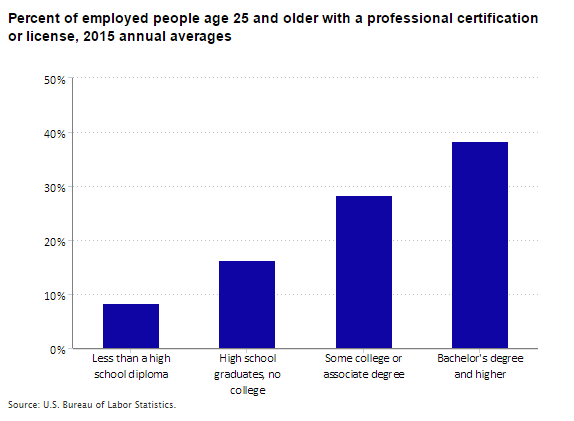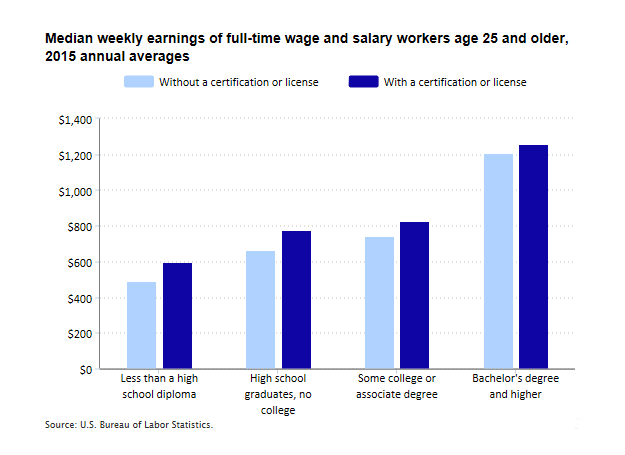To data nerds like us at BLS and many of our data users, there’s little more satisfying than releasing an important set of new, needed information. Today is such a day!
When applying for a job, people often point to their education to show they have the necessary skills to do the job. But many jobs also require professional certifications or licenses. While BLS has published statistics on labor force status by level of education for a long time, nondegree credentials, such as professional certifications or licenses, have received less attention in national surveys. That is, until today—BLS now has a stat for that, too!
Professional certifications and licenses are nondegree credentials that show a person has the skill or knowledge needed to do a specific job. These include credentials like commercial driver’s licenses, teaching licenses, medical licenses, information technology certifications, and many others. They are important. Just take a moment to think about yourself and your family members. Chances are that many of you have such credentials. Indeed, three of my four siblings do: as an accountant, a nurse, and a hairdresser.
To learn more about who has professional certifications and licenses and how they fare in the labor market, we’ve added new questions to the Current Population Survey. That’s the monthly survey of about 60,000 households that we use to measure the U.S. labor force and unemployment rate.
From these new data, we find that 25.5 percent of employed people held a currently active certification or license in 2015.
These credentials are more common in certain occupations. For example, a high proportion of workers in the healthcare field had certifications or licenses.
We also find that employed people with a college degree are more likely to have professional certifications and licenses than workers with less formal education.

Additionally, these new data show that having a certification or license is associated with higher earnings among people with similar levels of education. For example, among workers age 25 and older with some college or an associate degree, people who held a certification or license earned a median of $825 per week. That was 11 percent higher than the earnings of people who did not have these credentials ($742).

Looking ahead, collecting these data regularly will allow us to see whether the percentage of people with certifications and licenses changes over time. We will also be able to track measures of labor market success for people who hold a certification or license, compared with people who don’t hold these credentials. These new data and analyses will help guide key personal, business, and policy decisions about professional credentials.
The questions in the survey are based on the work of the Interagency Working Group on Expanded Measures of Enrollment and Attainment. This group played an important role in developing concepts and survey questions to measure alternative credentials.
BLS is committed to providing essential labor market information to support public and private decision making. As Commissioner, I am proud of the work done by BLS and others to shed light on this aspect of the labor market. Don’t forget to check out all of our new data on professional certifications and licenses.
 United States Department of Labor
United States Department of Labor